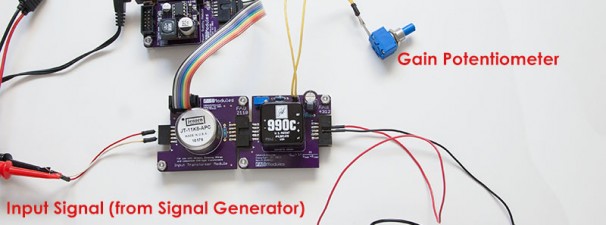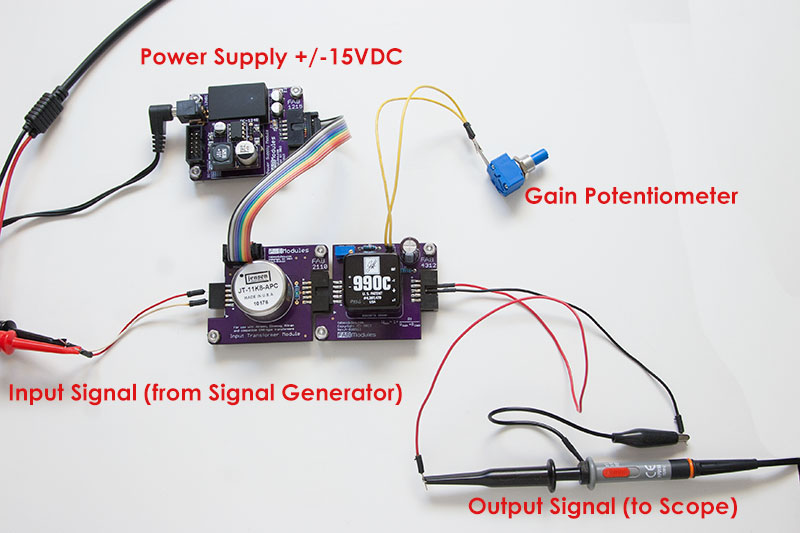Okay, how do we find out what’s the maximum output capability of your FAB module system? To answer this question, we first need to segue and talk about decibels.
Wikipedia says: The decibel (dB) is a logarithmic unit that indicates the ratio of a physical quantity (usually power or intensity) relative to a specified or implied reference level.
Basically, it’s saying that decibel is nothing but a RATIO between 2 numbers. Example: Instead of saying the 2nd number is 2X the value of the 1st number, we say it’s 6dB larger, or 6dB more. A decibel allows us to compare 2 numbers logarithmically, comparing 2 numbers whose ratio are either very, very small or very, very large.
For example: If we’re talking about amplitude (basically, our waveform), if our output signal is 2x the input signal, that’s a 6dB difference (or gain). If the output signal is 10x the input signal, that’s a 20dB difference (or gain). Taking it to the extreme, if our output signal is 1,000x larger than the input signal, that’s a 60dB difference (or gain).
Since plain old decibel (dB) is just a RATIO between (2) numbers, how can we communicate more clearly what kind of numbers are we comparing?
Ahhh…. this is when we add a “suffix” to the plain old dB. By adding a suffix to “dB”, we’re basically indicating to the reader the reference number/quantity, i.e. the 1st number we’re comparing against.
Some examples:
dBu = we’re comparing against 0.775Volts RMS as our 1st number.
dBm = we’re comparing against 1 milliWatt of power. Basically, we’re comparing against 0.775Vrms but LOADED with a 600-ohm load/resistor.
Think of “dBu” as unloaded, and “dBm” as loaded with a 600-ohm resistor.
There are other “reference” numbers dB is used for, but for audio work, dBu and dBm (and plain old dB) are the most commonly used.
So now, how can we measure the GAIN of our FAB Module? i.e. how much bigger is the output signal compared against the input signal?
Voltage Gain = Voltage Out / Voltage In
To convert this to decibel, use the formula:
Gain (dB) = 20 * log (Vout/Vin) = 20 * log (Voltage Gain)
If Vin = 1Volt, and Vout = 2Volts, then Voltage Gain = 2. Using the formula above:
Gain (dB) = 20 * log (2) = 6.0205999 or approximately 6dB
Note, we just use the plain dB symbol here (without any suffix). Because we’re just comparing 2 numbers against each other.
Fine. Now, what if we want to measure the maximum voltage output capability of our FABModule. i.e. what is the maximum level it can output? For this purpose, dBu or dBm is typically used. Remember, dBu is referenced against 0.775V rms, while dBm is referenced again 0.775V rms (loaded with 600-ohm).
Here’s our setup: (Remember, we’re only working with a +/- 15VDC power supply. If our power supply voltage is higher, the maximum output level we’ll achieve will also be higher.)
So I adjusted the Gain Potentiometer so I can view the maximum sine wave signal on my scope, without any clipping. The output we got is:
So the scope measures 25.5Volts Peak-to-Peak… meaning, from the highest point in the waveform, to the lowest point. We need to convert this Peak-to-Peak voltage to RMS (Root Mean Square), or average.
The formula is:
Vrms = Vpeak / Sqrt(2)
Vpeak = Vpeak-to-peak / 2
Vpeak = 25.5 / 2
Vpeak = 12.75Vpeak
Substituting:
Vrms = 12.75Vpeak / Sqrt (2)
Vrms = 9.0156Volts rms
We’re not yet done… now, we need to compare this against our reference voltage which is 0.775Vrms (so we can get the dBu number). Remember, “u” in dBu is unloaded (i.e. without any 600-ohm load).
dBu = 20 x log (Vrms / Vref)
dBu = 20 x log (9.0156 / 0.775)
dBu = 20 x log (11.6330)
dBu = 20 x (1.06569)
dBu = 21.313 dBu
So, there’s our answer… the maximum output level of this particular FAB Module setup (using a +/-15VDC power supply) is +21.313dBu.




